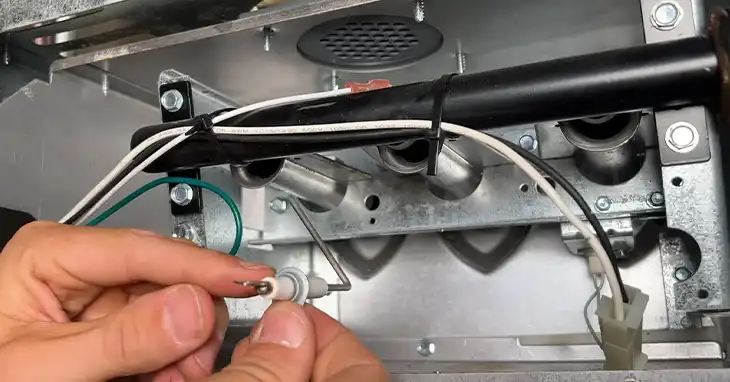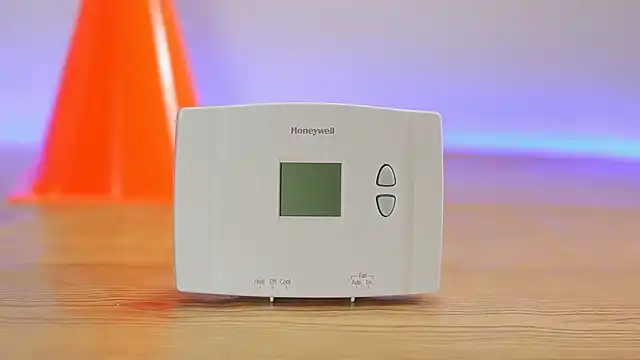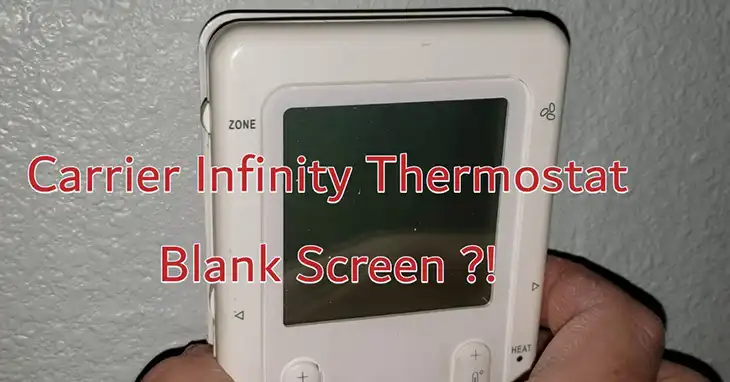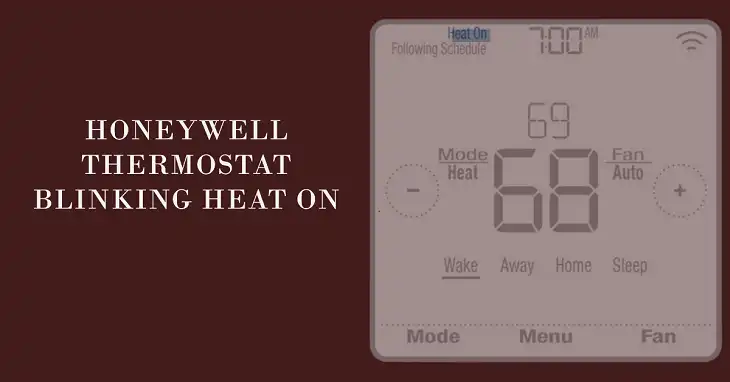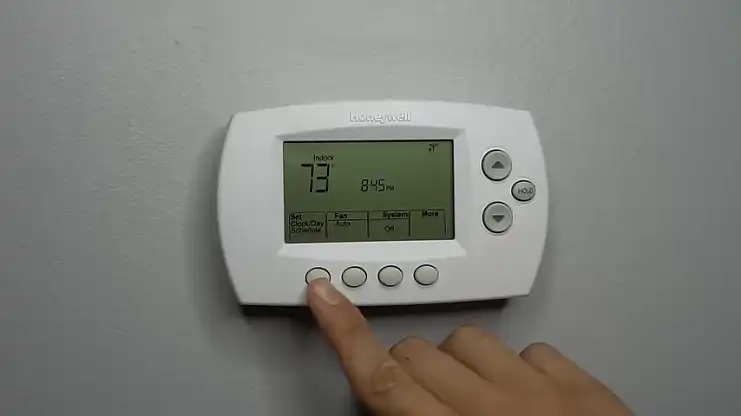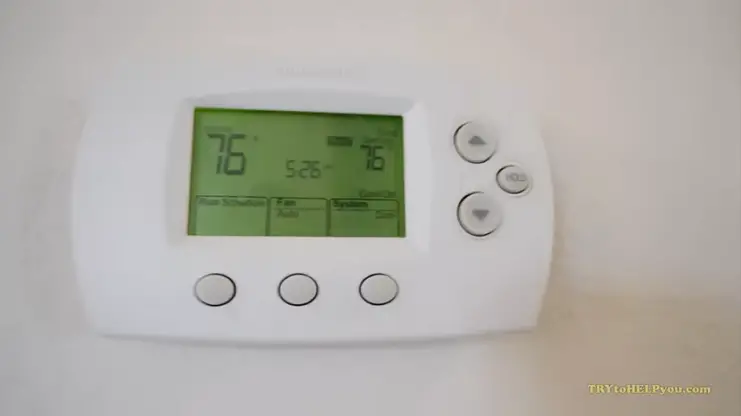Thermostat Goes Blank Then Comes Back On: How to Fix It
A properly functioning thermostat is the nerve center of your home’s climate control system. When it suddenly goes blank and then comes back to life, it can be more than just a minor inconvenience—it can disrupt your comfort and potentially signal more serious issues with your HVAC system.
That’s why, in this article, we’ll walk you through understanding why your thermostat is going blank and coming back on again, or in short, why it’s power cycling. Later on, we’ll explain how you can go about troubleshooting the issue. So, without further ado, let’s begin.

Common Causes of Thermostat Going Blank Intermittently
Several factors can contribute to a thermostat going blank and then restarting. Let’s explore the most frequent culprits:
Power Issues
Power-related problems are often the root cause of a blank thermostat display. These can include:
- Dead batteries: If your thermostat is battery-powered, weak or depleted batteries are a common culprit.
- Tripped circuit breaker: A power surge or other electrical issue may have tripped the circuit breaker supplying power to your HVAC system.
- Blown fuse: In older homes, a blown fuse could be interrupting power to the thermostat.
- Loose wiring connections: Over time, wiring connections can become loose, causing intermittent power issues.
Thermostat Problems
Sometimes, the issue lies within the thermostat itself:
- Faulty internal components: Like any electronic device, thermostats can suffer from component failure.
- Short cycling: This occurs when your HVAC system turns on and off rapidly, which can cause the thermostat display to flicker or go blank.
- Software glitches: Particularly in smart thermostats, software bugs can cause display issues.
- Age-related wear and tear: Older thermostats may simply be reaching the end of their lifespan.
HVAC System Issues
In some cases, problems with your heating and cooling system can affect the thermostat:
- Triggered safety switch: Many HVAC systems have safety features that shut down the system (and potentially the thermostat) if they detect a problem.
- Dirty air filter: A clogged filter can cause your system to overheat, potentially triggering a safety shutoff.
- System overheating: Various issues can cause your HVAC system to overheat, leading to shutdowns.
- Clogged condensate lines: In air conditioning systems, a clogged condensate line can trigger a safety switch, shutting down the system.
How to Troubleshoot a Thermostat that Goes Blank and Comes Back On
Now that we understand the potential causes, let’s walk through a systematic approach to troubleshooting your blank thermostat:
Basic Checks
Start with these simple steps:
- Confirm that the thermostat is actually turned on. It may seem obvious, but it’s worth checking.
- Look for any visible damage to the thermostat or its surrounding area.
- If your thermostat has a display, check for any low battery warnings that may appear when it’s functioning.
Power Supply Troubleshooting
If the basic checks don’t resolve the issue, move on to power-related troubleshooting:
- For battery-powered thermostats:
Remove the thermostat cover carefully and replace the batteries with fresh ones, ensuring correct polarity. Finally, replace the cover and check if the display comes back on.
- For hardwired thermostats:
Locate your home’s circuit breaker box. Find the breaker labeled for your HVAC system or thermostat. If it’s tripped, reset it by switching it fully off, and then back on. If the breaker trips again immediately, don’t reset it—call an electrician, as this could indicate a more serious electrical issue.
- For homes with fuse boxes:
Locate the fuse controlling the HVAC circuit and check if it’s blown and replace it if necessary. If fuses blow repeatedly, consult an electrician.
HVAC System Checks
If the problem persists, it’s time to look at your HVAC system. First, locate your system’s air filter and check if it’s dirty. Replace it if it looks clogged or if you can’t remember the last time you changed it.
Another trick is to listen for any unusual noises coming from your HVAC system when it’s running. Finally, check for any water leaks around your indoor unit, which could indicate a clogged condensate line.
Advanced Troubleshooting
If the above steps don’t resolve the issue, you may need to delve deeper:
Wiring Inspection
Carefully remove your thermostat from the wall plate and inspect the wiring. Look for any loose connections or frayed wires.
Ensure that wire colors match up correctly with their terminals. If you’re uncomfortable working with wiring, this is the point where you should consider calling a professional.
Thermostat Replacement Considerations
If your thermostat is old or has been problematic, it might be time for a replacement. Consider the age of your current thermostat. Most have a lifespan of about 10 years. Research new models that are compatible with your HVAC system. Weigh the benefits of upgrading to a programmable or smart thermostat for improved energy efficiency.
HVAC System Diagnostics
Some HVAC issues require professional diagnosis. Many modern systems have built-in diagnostic modes that can help identify problems. A professional HVAC technician can perform a comprehensive system check to identify any underlying issues affecting your thermostat.
Maintenance Tips to Prevent Future Thermostat Issues
To avoid future thermostat blank-outs, consider these preventive measures. Replace batteries in battery-powered thermostats annually, even if they seem to be working fine. Change your HVAC air filter every 1-3 months, depending on usage and manufacturer recommendations.
Schedule annual maintenance for your HVAC system with a qualified technician. Keep your thermostat clean and free from dust. Consider installing a whole-house surge protector to safeguard your HVAC system and thermostat from power surges.
Wrapping Up
A thermostat that goes blank and then comes back on can be a frustrating problem, but with the right approach, it’s often solvable. Remember to start with the simplest solutions, like checking power sources and batteries. Regular maintenance of both your thermostat and HVAC system can prevent many issues. Don’t hesitate to call a professional if you’re unsure or if the problem persists. Consider upgrading to a modern, energy-efficient thermostat if yours is outdated.
Frequently Asked Questions
Why does my thermostat keep restarting?
A thermostat that keeps restarting could be experiencing power supply issues, software glitches, or wiring problems. This can happen due to loose connections, faulty batteries, or even electromagnetic interference from nearby electronic devices. In some cases, it might indicate a failing thermostat that needs replacement.
Why is my thermostat flashing on and off?
A flashing thermostat display often indicates a specific issue that the device is trying to communicate. This could be a low battery warning, a system malfunction, or a reminder for scheduled maintenance. Consult your thermostat’s manual to decipher what the flashing pattern means for your particular model.
Why does my heating keep coming on when the thermostat is off?
If your heating system activates despite the thermostat being off, it could indicate a stuck relay, a wiring short, or a faulty thermostat. This issue can lead to unnecessary energy consumption and should be addressed promptly. It may require professional inspection to determine if the problem lies with the thermostat or the heating system itself.
Are thermostats AC or DC?
Thermostats can operate on either AC (Alternating Current) or DC (Direct Current), depending on their design. Hardwired thermostats typically use low-voltage AC power (usually 24V) supplied by a transformer connected to your HVAC system. Battery-operated thermostats use DC power from the batteries. However, some modern thermostats can use both: AC power for normal operation with a battery backup for maintaining settings during power outages.

